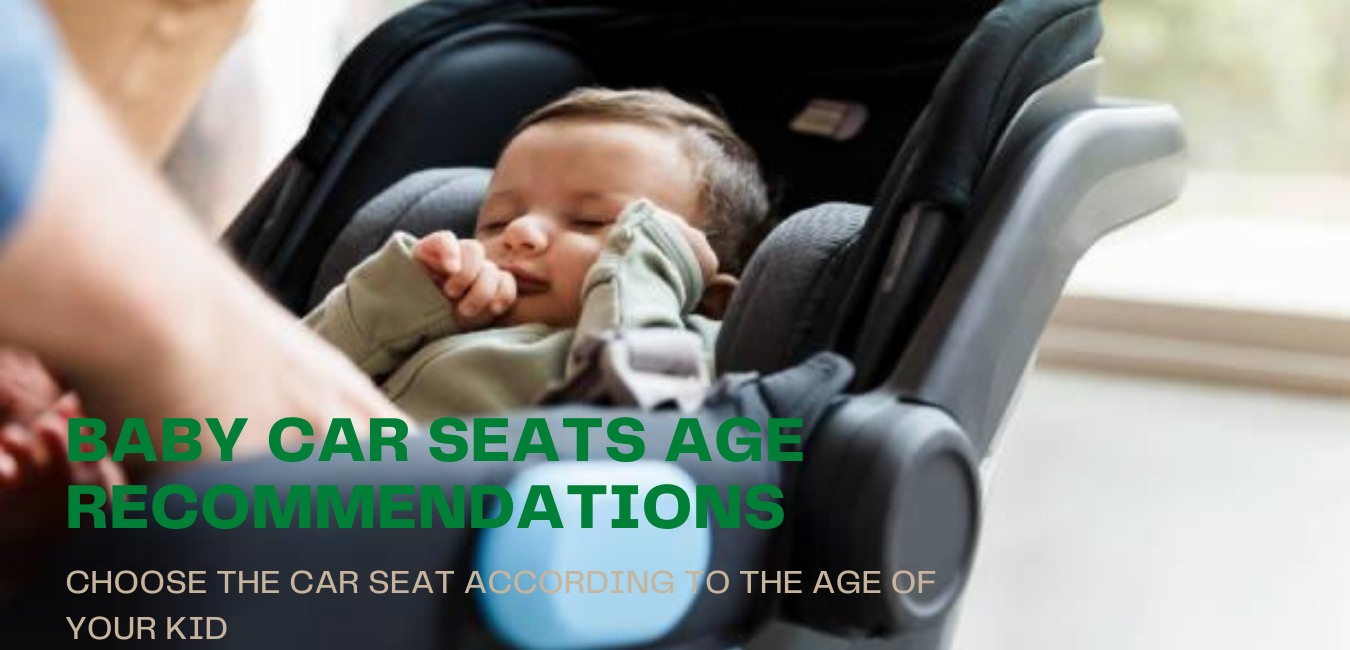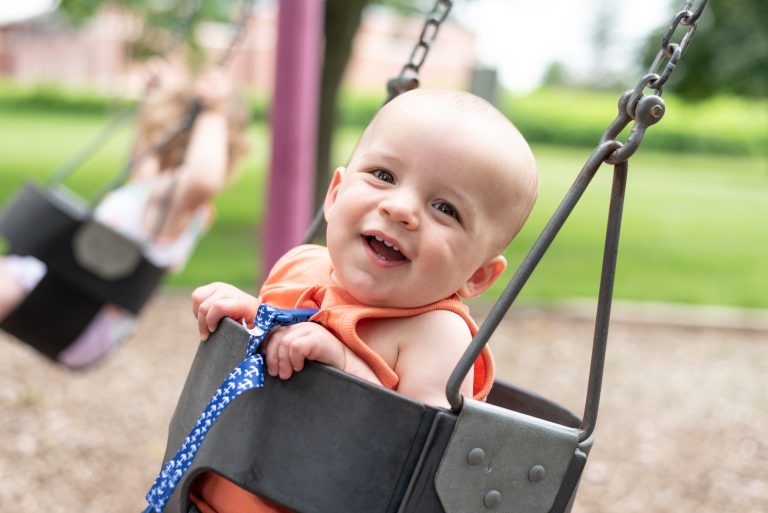Baby car seats are used for children from birth to teenage. They are important because they offer protection to your baby even from day one of his life. Infants can’t control the motion of their body even in normal conditions, infant seats hold them safely and gently and make it a lot easier for parents to travel with their baby.
There is no doubt that baby car seats are very crucial regarding the safety of your child while travelling, but it is really important to choose the best suit for your child( height, weight and age-wise).
TYPES OF CAR SEATS FOR KIDS
Parents buy a car seat for their kids to avoid any mishap while travelling and they spend a lot on these seats. Some parents who don’t have much understanding of car seats may spend more than others because they don’t know when to buy a specific car seat for their growing baby.
There are three types of car seats.
- Rear-facing car seat
- Forward-facing car seat
- Booster-Seat
One of the most important duties as a parent is the safety and security of your baby. Changing the car seat according to the age cycle is not good. You should change the car seat of your baby according to his physical development.
When you know that your child is ready for the next car seat to use you can change it. But when he is not ready there is no need of using the next stage car seat you should use the current car seat which fits on your baby.
1. REAR-FACING CAR SEAT
The perfect car seat for newborns is the rear facing. It is the safest seat by any means and parents shouldn’t put their child in any other car seat except it.
Infants who cannot use the adult seatbelt should firstly use the rear-facing car seat. It is usually used for infants and toddlers for travelling purposes. A rear-facing car seat is comfortable for infants they should spend most of the time in it when they travel. When you’re using the rear-facing car seat you should go through the five points harness.
Always keep the rear-facing car seat on the back seat because if you keep it on the front seat of the vehicle, in case of an accident when the airbag will open it can badly affect your baby’s head. It may result in serious injury. Check the instruction diary of the car seat that at which angle your baby can fits or not.
NHTSA and AAP recommendations are to put the infant in the rear-facing car seats till the age of at least 18 months or so.
TYPES OF REAR-FACING CAR SEATS
There are different types of car seats that operate in rear-facing mode, some are purely for infants, and some are combination car seats.
1. REAR-FACING ONLY SEATS
Rear-facing only car seats are used for infants. Its weight is about 22 to 30 pounds. Its weight depends upon the model you buy. It is very small and has handles by which you can carry it easily. This seat is only used for children to travel but not for eating and sleeping purposes.
2. CONVERTIBLE SEATS
These seats are also used for rear-facing but have converting ability. You can first use this seat as rear-facing and later you can convert it for the next stage. This means that you can use the convertible seats for a long time. Its weight is more than the rear-facing seats. For security, it has five points of the harness that attach to the shoulder.
3. ALL-IN-ONE CAR SEATS
It can also be used as rear-facing but have more functions than other seats. They are bigger in size but before buying you should check if they fit in your vehicle or not. These seats do not have handles for carrying but are larger in size and heavy in weight. These seats come with new features. It depends upon the model you buy or the money you spent on it.
Although, above all car seats can be used for infants but it is preferable to opt for the rear-facing only seats because they are the safest car seats, read for more information.
2. FORWARD-FACING CAR SEATS
At the 2nd stage, you’re going to use the forward-facing car seat after using rear-facing car seats. Because your baby is growing up and he is not such a baby anymore. Now it’s time for you to buy a forward-facing car seat. Forward-facing car seats come with an internal harness. Children who use forward-facing car seats are less likely to get injured than those who use adult car seats. Forward-facing car seats provide proper protection to our children. It has an impact shield that helps the baby to keep in a particular place.
TYPES OF FORWARD-FACING CAR SEATS
1. FITTING FORWARD-FACING CAR SEATS
These seats are very comfortable and flexible. You can easily fit this seat into your car. Moreover, you should follow the manufacturer’s recommendations on how to fit and how to use it. Because it has some specifications and you may never understand.
Fixing this car on a vehicle usually depends upon the nature of the seat you buy. This seat is larger than the others. You can fit this seat into anchorage points that are available in the car.
2. SEAT FITTED WITH THE CAR SEAT’S BELT
This version of seats is new in which you can fit this seat into your car’s seat belts. This will increase the security of your baby and he can sit in the car in a more comfortable way. You should use the manufacturer’s recommendations for fixing this into your vehicle. Because fixing this is a risky task when you will fix it lose it might cause some danger for your baby.
3. ISOFIX FORWARD-FACING CAR SEATS
Isofix forward-facing seats do not use seat belts of vehicles. They have their own belts through which you can fix the seat into your vehicle. These seats have foot support that needs to be extended to the floor of the car. The weight of this seat is heavier than others.
3. BOOSTER SEATS
When your child reaches the third stage you’re going to use a booster seat now as your child growing up and you need to change the seat now. Many parents wonder if their child is ready to use the booster chair yet or no. The answer is quite simple. You shouldn’t compare your child with someone else’s. Because the physical development of every child is different some grow up early and some late. Therefore you should only use the booster seat when your child is ready for it.
There are also booster seats for overweight kids that are available in the market.
TYPES OF BOOSTER SEATS
1. HIGH BACK BOOSTER SEATS
In high back booster seats, the seat belts are positioned correctly to the body of your child. Road safety authority always recommends having a booster chair for travelling. It gives protection to your child and gives safety as well.
These seats usually don’t have internal harnesses they are fitted in the cars. It is important that the seat belt is completely adjustable and correctly positioned on your baby’s shoulder.
2. COMBINATION HARNESS TO BOOSTER SEATS
A combination harness of the booster seat protects your child from any injury. A combination harness also aligns the shoulder portion of the vehicle seat belt on the child’s shoulder. The major difference in these seats is harness because it is the major factor as it leads to baby safety.
3. BACKLESS BOOSTERS
Backless booster seats are special cushions children sit on. These seats do not have the back support and raise the child to sit on a particular car seat. These boosters have seat belts over the correct place on the child’s body. These seats act more traditional and are mainly used by children who are tall or older so they can fit into them.
When your child reaches the maximum age for booster seat, he can travel only with the vehicle’s own belt.



